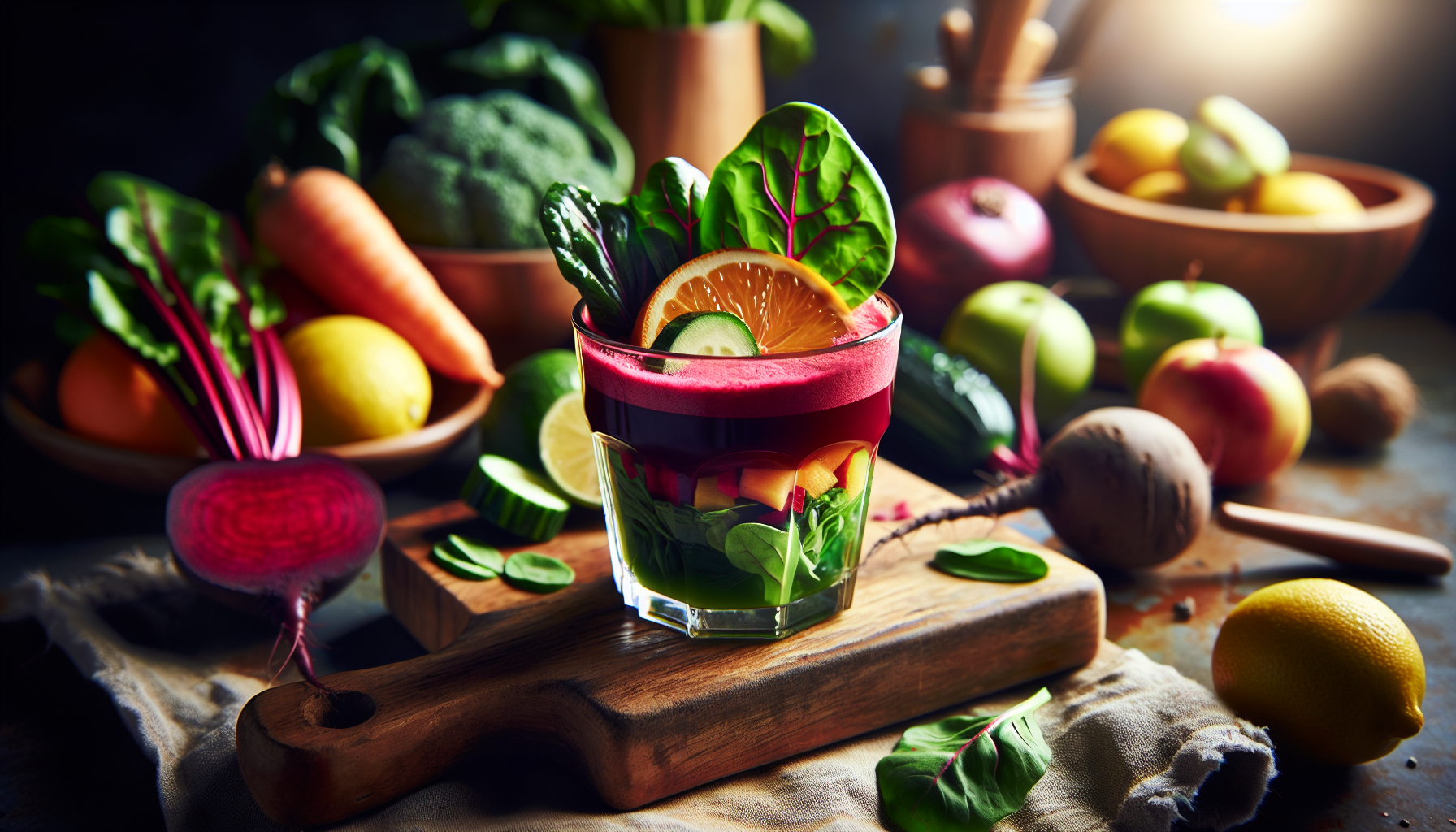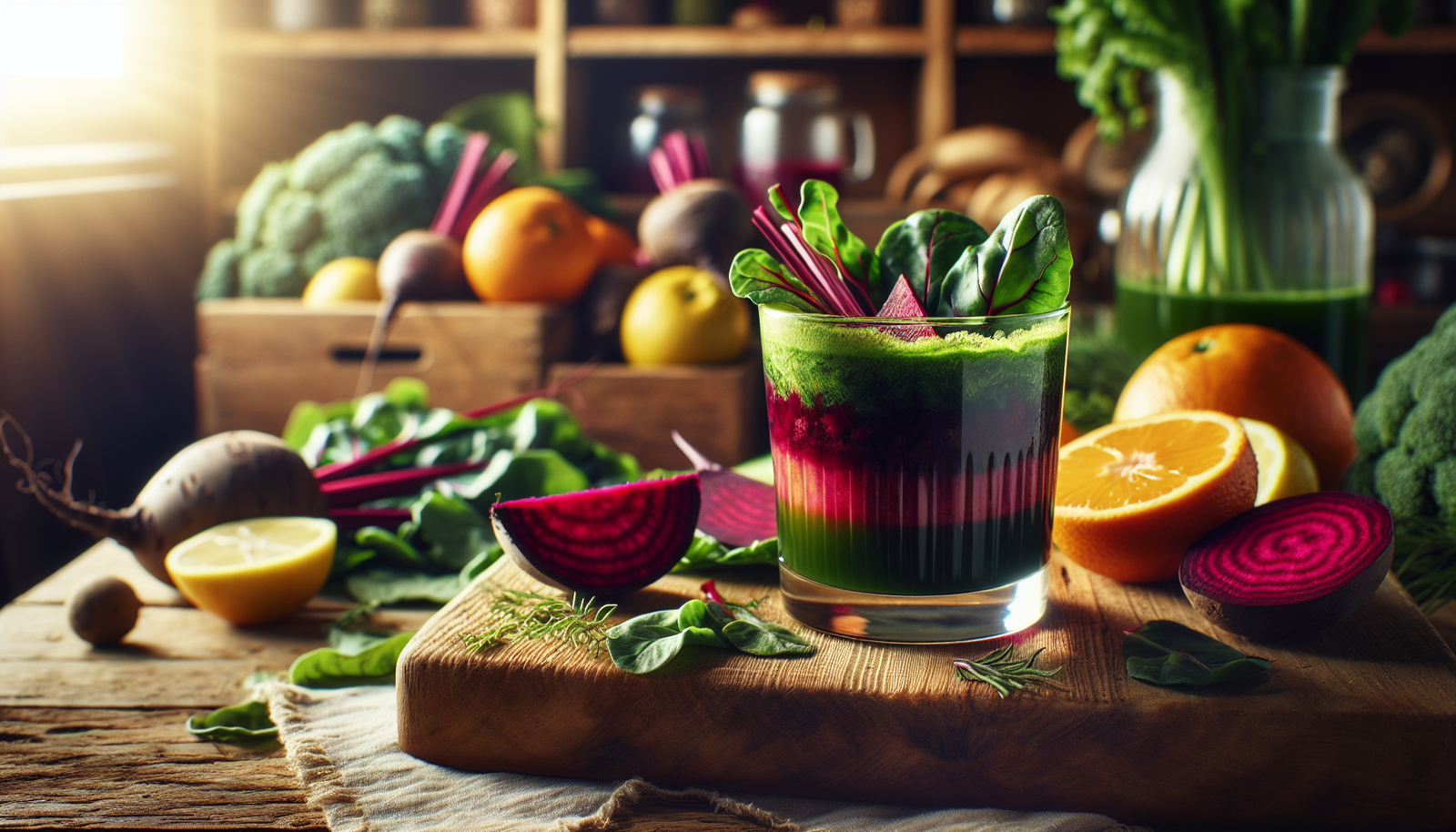Does juicing seem like a healthy option for you? Perhaps you’ve heard that juicing can bring a wealth of vitamins and nutrients into your life. While that might be true, have you ever considered the potential negatives, like oxalate concentration? It’s a complex topic, but understanding the relationship between juicing and oxalates can help you make informed choices about what you’re drinking.
What Are Oxalates?
You might already know a bit about oxalates, but let’s break it down. Oxalates are naturally occurring compounds found in various plant foods. You can think of them as a double-edged sword. On one side, they provide numerous health benefits. On the other, they can contribute to certain health issues.
Where Are Oxalates Found?
These compounds are prevalent in foods like spinach, rhubarb, beets, almonds, and sweet potatoes, among others. They can also be found in some berries, tea, and legumes. You may not notice just how interconnected your diet is with these foods until you start to compare.
Why Do You Need to Know About Oxalates?
A common factor in kidney stone formation is oxalates. If you’re someone who has a history of kidney stones or is predisposed to them, knowing your oxalate intake is vital. That being said, for most people, moderate intake of oxalates from whole foods is not typically a cause for concern. The issue arises more prominently with concentrated forms, such as those found in juices.
Juicing: The Basics
Juicing is the process of extracting juice from fruits and vegetables. Many people consider it a convenient way to consume larger amounts of vitamins and minerals. But what does this process do to the compounds within these foods?
The Nutritional Benefits of Juicing
By juicing, you’re often able to skim the fibrous parts of fruits and veggies, harnessing an intense nutrient load per serving. Vitamins, minerals, and antioxidants are released in abundant quantities, which can be appealing.
The Other Side of Juicing: Concentration of Oxalates
Juicing may make you feel like you’re doing something great for your body, but it can also concentrate certain compounds, including oxalates. When you extract juice, you’re removing the fiber, which plays a role in how your body processes certain substances. This is where it gets a little tricky.
How Juicing Affects Oxalate Levels
When you juice high-oxalate foods, like spinach or beets, you’re taking concentrated elements of those foods. Without the solids—like pulp—that may bind oxalates, your juice can result in higher oxalate levels than you might anticipate. This means that while you’re sipping on what you believe is a healthy drink, you could be unknowingly increasing your oxalate intake.
The Juicing Process
To understand how juicing concentrates oxalates, it’s essential to look at the process itself. When you juice an oxalate-rich vegetable, here’s what typically happens:
- Extraction: Juicers extract liquid from the pulp of the vegetables and fruits.
- Removal of Fiber: The fibrous parts, which can help reduce the absorption of oxalates, are removed.
- Concentration: The resultant juice may contain a higher concentration of oxalates than the whole food.
Real World Example: Spinach Juice
If you decide to make spinach juice, you might be surprised by the oxalate content. Whole spinach is moderately high in oxalates; however, when you juice it, the concentration can spike due to the lack of fiber. Instead of consuming spinach in its whole form, you’re more likely to take in a concentrated amount of oxalates.
Factors Influencing Oxalate Levels in Juicing
Several factors can influence the oxalate levels in your juice, depending on what you’re juicing and how you’re doing it. Here’s a look at some of those crucial factors.
Type of Produce
Different kinds of fruits and vegetables have varying oxalate levels.
| Produce Type | Oxalate Level |
|---|---|
| Spinach | Very High |
| Rhubarb | Very High |
| Beet Greens | High |
| Almonds | Medium |
| Carrots | Low |
| Apples | Low |
By choosing low-oxalate produce for your juice, you can minimize your oxalate intake. It’s all about being informed about which foods you’re working with.
Juicing Method
The way you juice can also impact the concentration of the nutrients and oxalates. For instance:
- Cold-Pressing: This method tends to retain more nutrients but still removes fiber.
- Standard Juicers: These machines can rapidly heat the juice, which may degrade some nutrients. However, they still extract juice that is often more concentrated in certain compounds, including oxalates.
Serving Size
Consider how much you’re consuming in one sitting. Juicing often leads to drinking a large amount of produce in a single glass. For example, a single juice can come from several handfuls of spinach or a whole bunch of beets. It’s easy to exceed the typical serving sizes you would have if you were eating whole foods.
Health Risks of High Oxalate Intake
If you’re consuming a lot of high-oxalate juices frequently, you might face some health risks. These aren’t to be taken lightly.
Kidney Stones
The primary concern relating to high oxalate intake is kidney stones. For individuals who are susceptible, a diet high in oxalates can lead to calcium oxalate stone formation. This condition can cause significant discomfort.
Other Health Issues
Excessive oxalate intake has also been linked to other health issues. While it’s not common for everyone, consuming very high amounts can potentially lead to:
- Digestive Issues: Some people may experience digestive discomfort or issues if they consume high oxalate foods regularly without balance.
- Nutritional Imbalances: A diet overly focused on high-oxalate foods can lead to malabsorption of calcium and other nutrients.
Strategies for Healthy Juicing
Being aware of oxalates doesn’t mean you need to avoid juicing altogether. You can take steps to ensure your juice is both nutritious and balanced.
Mix It Up
Instead of solely using high-oxalate veggies, incorporate a variety of produce. Try mixing in lower-oxalate fruits and vegetables for balance. For instance, you might add cucumbers, apples, or carrots to your spinach juice.
Watch Your Portions
Moderation is essential. Instead of drinking a large glass of pure spinach juice, consider splitting it and drinking smaller amounts throughout the day or mixing it with other ingredients.
Balance with Fiber
One option is to retain some of the pulp in your juice, if your machine allows it. This can help retain some fiber content and minimize oxalate absorption in your system. Fiber has numerous benefits for health, including improved digestion.
Stay Hydrated
Drinking plenty of water can help dilute oxalates and assist in the prevention of kidney stones. If you enjoy juices, complement your diet with plenty of water throughout the day.
Consult with Professionals
Ultimately, if you happen to have a medical condition related to oxalate sensitivity or kidney stone issues, engaging with a healthcare provider or nutritionist is a smart move. They can provide tailored advice and strategies suited to your needs.
Personalize Your Juicing Routine
Each person’s needs and reactions to oxalates can differ greatly. By consulting with a professional, you can create a personalized juicing strategy that keeps you healthy while allowing you to enjoy the flavors and benefits of fresh produce.
Conclusion: Juicing with Awareness
Juicing can certainly be a delicious and nutrient-packed part of your diet. Still, it’s critical to understand how various factors, like oxalate concentration, come into play. Awareness is key; the more you know, the better choices you can make for your health.
So, next time you consider whipping up a fresh juice, think about the oxalate levels in your ingredients and the potential impacts they could have on your body. Balancing enjoyment and health can lead to a more satisfying and responsible juicing experience.





